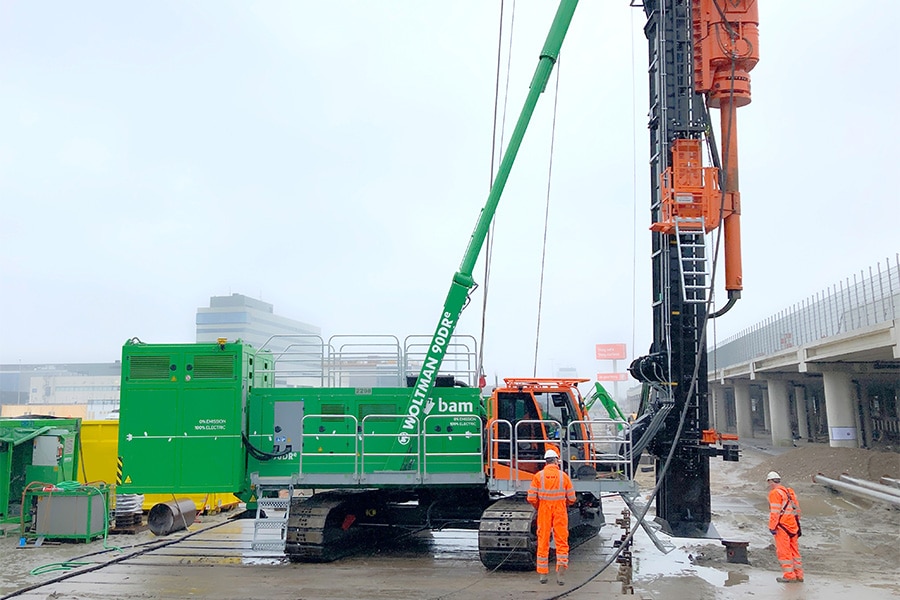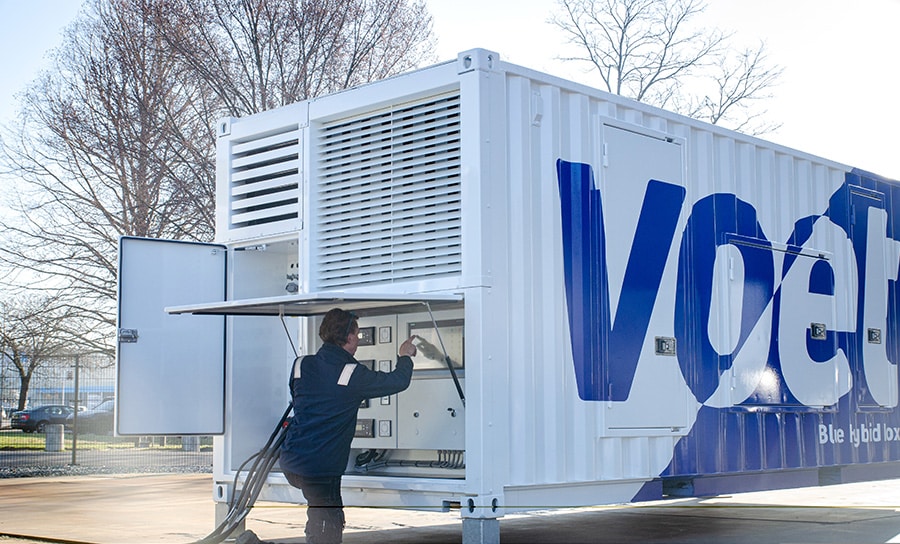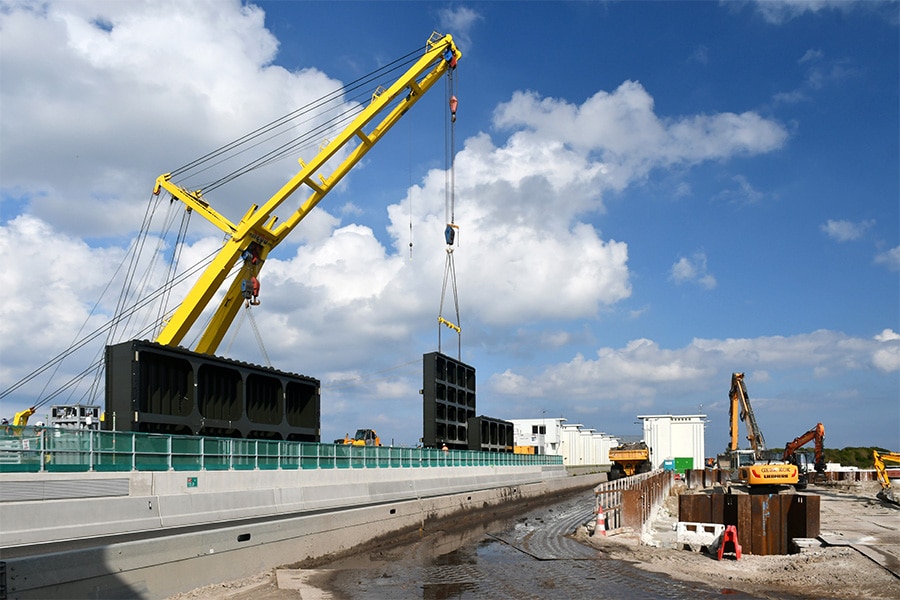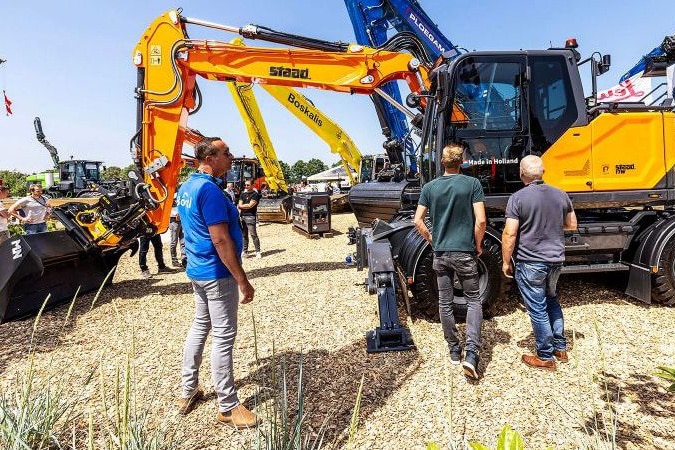
How to make a (construction) process more efficient, smarter and greener
What do infrastructure, construction and industry have in common? The answer to that question is clear according to Radboud van Dusseldorp and Stefan Lekkerkerker of VSE Industrial Automation in Schoonhoven: the technology behind it. Electrical control is needed everywhere, and based on virtually the same technology, VSE is able to help clients from various sectors with the challenges of energy transition. They are happy to show this at the Energy Trade Fair, which will take place from October 10 to 12 in the Brabanthallen in 's-Hertogenbosch. In this article we look ahead.
Fifty years of experience
VSE is the technical, certified partner in sustainability and energy efficiency for many organizations in infrastructure, construction and industry. The company will be celebrating its 50th anniversary next year and has designed and implemented energy-efficient controls for numerous bridges, locks and barriers over the past decades. "We also have a proven track record in the automation and electrification of earthmoving machines, aggregates and other construction equipment," says Radboud van Dusseldorp, Commercial Technical Manager at VSE. "And we help industrial companies save energy and reduce their connection power. As experts in Automation & Motion Control, we know better than anyone else where the bottlenecks are, but also where there are still unused opportunities. From inception to completion, we are involved and think proactively, providing the most complete and project-specific solution."

More and more high-tech
"Just like industry, the infrastructure and construction sectors are becoming increasingly high-tech," said Stefan Lekkerkerker, Technical Specialist at VSE. This leads to great sustainability and circularity projects for VSE. "With every project, we look at it from the controls, whether it's a bridge, hoist or foundation machine, because the technology behind these seemingly different objects is largely the same."
Trade Fair Energy
At Vakbeurs Energie, the largest business networking event in the context of energy transition in the Netherlands, VSE will have a strong presence. Stefan will conduct several seminars explaining electrification projects and demonstrating smart solutions for short-term energy storage and release. Visitors can also see several demo setups, including an economical synchronous reluctance motor that combines high efficiency with dynamism and durability, and a scale model of a bridge to demonstrate sustainable control. "All smart technologies that allow our customers to minimize energy losses, reuse energy, and reduce their dependence on grid capacity and stability," Stefan said.
3B Bridges building block
In the field of 3B control systems, VSE has gained a lot of experience. Radboud: "Ten years ago, we made the Ramspol Bridge completely energy-neutral and were the first to combine controls and drives with Siemens' universal building block 3B Bridges." This building block manages all dynamic functions in a bridge, provides predictable maintenance, greater reliability, fewer failures and offers flexible deployment of operators. On the Wantij Bridge, this has been extensively tested in theory and practice. Stefan emphasizes that the controls are simulated as much as possible, after which the client holds an IFAT in which the actual components are tested. "We have a lot of experience in the field of simulations: everything we cannot test in setups, we try to capture in a simulation environment. Only then do we go on-site at the bridge to do our work."
From diesel to battery
In civil engineering, electrification of very heavy construction equipment is playing an increasingly important role in reducing CO2-emissions. VSE offers solutions to help customers comply with stricter environmental regulations or carry out projects in zero emission zones while contributing to the goals of the Paris Climate Agreement.
Energy class IE4 or higher
More and more companies themselves want to be more energy efficient and have a lower footprint, in addition to the fact that the law is also imposing increasingly stringent requirements. Also in the industry, Radboud knows. "Because the rising demand for energy in industry is accompanied by an increase in CO2 emissions, governments around the world are looking for ways to reduce consumption and emissions. The EU has established the International Efficiency standard (IE), with IE4 replacing IE3 as of July 1, 2023 and plans for an IE5 efficiency level. A good thing, according to Radboud. "VSE, together with partner Siemens, is therefore fully engaged in providing innovative solutions for challenge like this." Such as the Ultra/SuperCaps, for low connection values or unstable electrical networks. The Dutch first of these was the UltraCaps on Torsit's warehouse cranes. "Hybrid generators and the electrification of a 100-ton foundation machine are other projects where VSE has gained a lot of knowledge and experience to help other customers make their operations more sustainable," Stefan says in conclusion.



